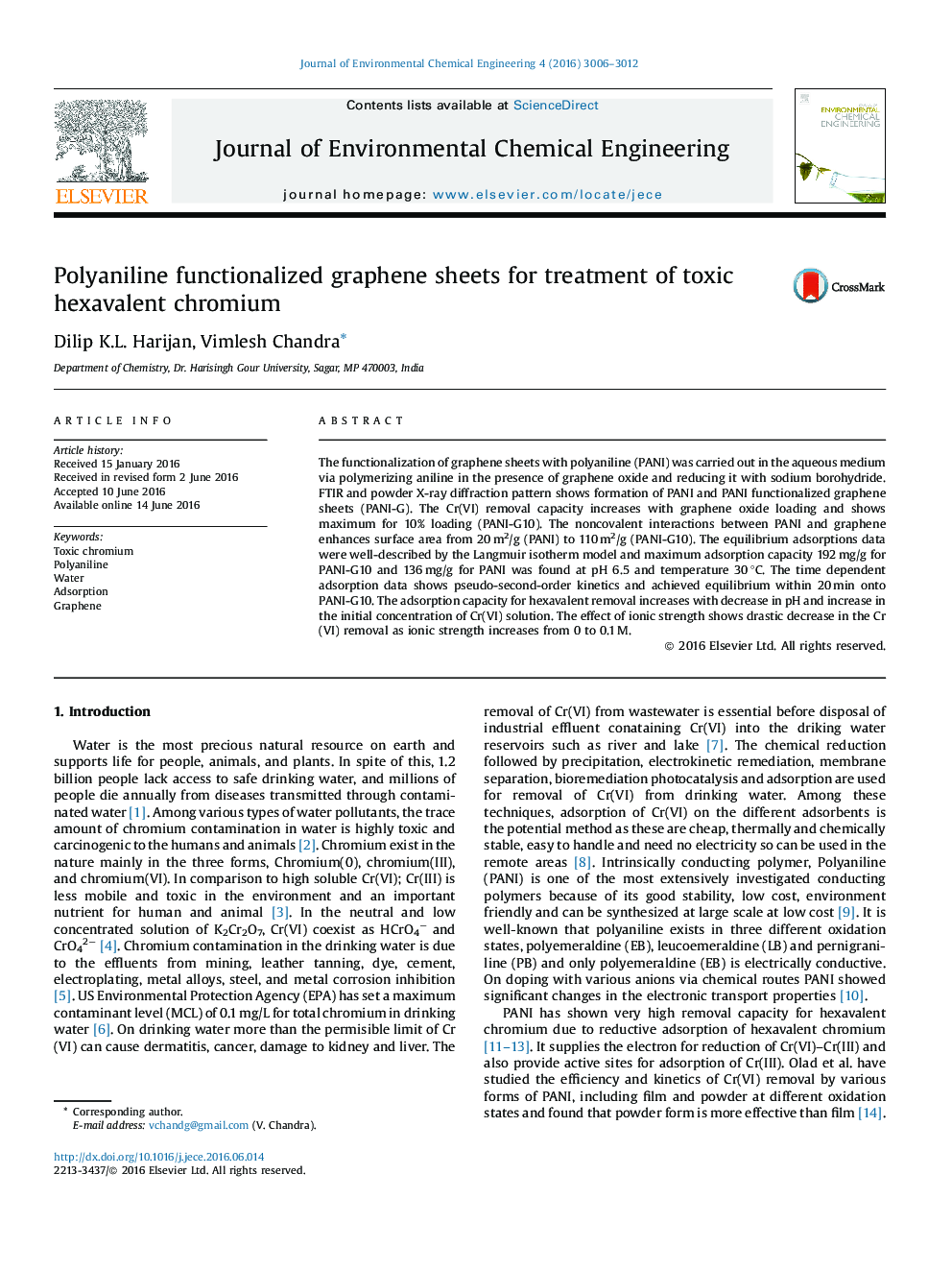| Article ID | Journal | Published Year | Pages | File Type |
|---|---|---|---|---|
| 221567 | Journal of Environmental Chemical Engineering | 2016 | 7 Pages |
•PANI shows formation of coral-like dendritic nanofibers whereas PANI functionalized graphene shows sheet structure.•The graphene loading in polyaniline enhances Cr(VI) adsorption.•The adsorption on adsorbent is governed by electrostatic interaction between anions of Cr(VI) and amino groups.•The maximum adsorption capacity of PANI functionalized graphene for Cr(VI) removal is 192 mg/g.•The Cr(VI) removal capacity decreases with increase in pH and decrease in the initial Cr(VI) concentration.
The functionalization of graphene sheets with polyaniline (PANI) was carried out in the aqueous medium via polymerizing aniline in the presence of graphene oxide and reducing it with sodium borohydride. FTIR and powder X-ray diffraction pattern shows formation of PANI and PANI functionalized graphene sheets (PANI-G). The Cr(VI) removal capacity increases with graphene oxide loading and shows maximum for 10% loading (PANI-G10). The noncovalent interactions between PANI and graphene enhances surface area from 20 m2/g (PANI) to 110 m2/g (PANI-G10). The equilibrium adsorptions data were well-described by the Langmuir isotherm model and maximum adsorption capacity 192 mg/g for PANI-G10 and 136 mg/g for PANI was found at pH 6.5 and temperature 30 °C. The time dependent adsorption data shows pseudo-second-order kinetics and achieved equilibrium within 20 min onto PANI-G10. The adsorption capacity for hexavalent removal increases with decrease in pH and increase in the initial concentration of Cr(VI) solution. The effect of ionic strength shows drastic decrease in the Cr(VI) removal as ionic strength increases from 0 to 0.1 M.
Graphical abstractFigure optionsDownload full-size imageDownload as PowerPoint slide
